Ground cover plants in the aquarium
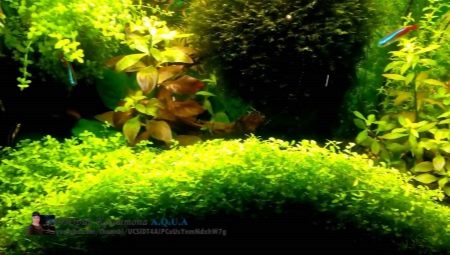
A beautiful aquarium design is impossible without ground cover plants. You will get acquainted with the names and features of the content of these species in this article.
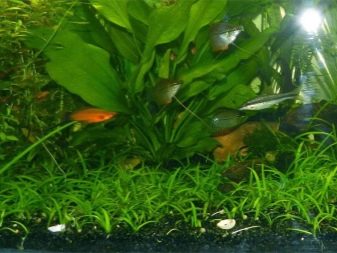
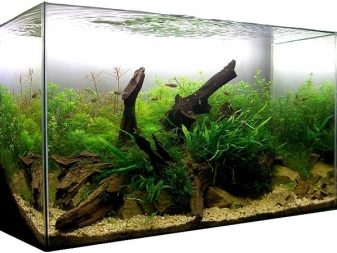
What are they for?
A well-groomed aquarium with bright fish and exotic algae delights - you just can't take your eyes off. Creating a beautiful landscape in a small underwater kingdom is impossible without ground cover plants.
The vegetation is planted in the meadows and lawn in the foreground and middle plan of the aquarium. They cover grottoes, fancy driftwood, decorative bridges, vessels, chests and ships, creating the main background against which large algae and variegated fish stand out favorably.
Normal soil without these plants will be dull, and the overall composition will be unfinished.
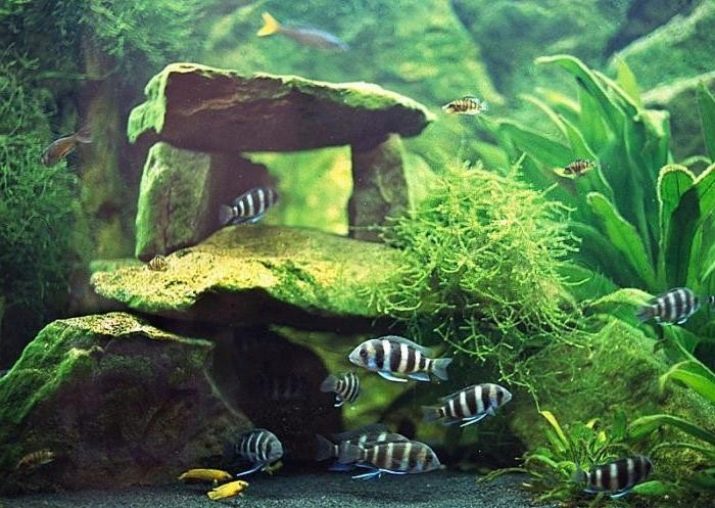
Views
Any seasoned aquarist will tell you that there is no separate type of groundcover. They all belong to different species and families, but have a lot in common:
- master any space, covering it with a dense beautiful carpet;
- safe for the inhabitants of the aquarium;
- do not pollute water, do not clog the filter;
- have a high cost: there are copies that are affordable only for wealthy amateurs.
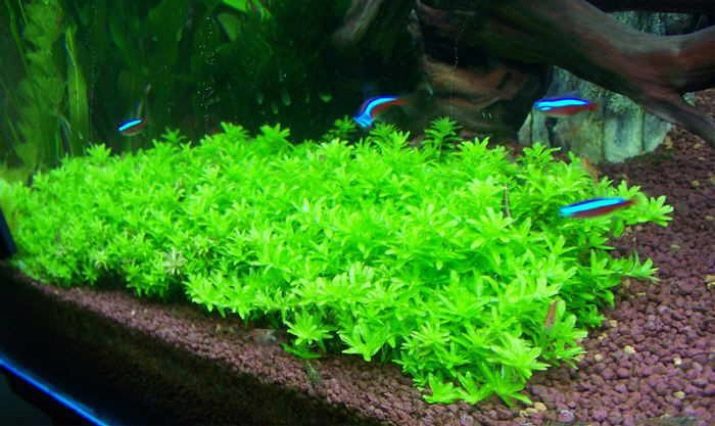
Popular ground covers include:
- javan moss (hypnum mosses family);
- liliopsis (celery family);
- sitnyags (sedge family);
- Hemianthus Cuba (Norichnikov family);
- Riccia (liver mosses);
- echinodorus tender (family of chastukhovyh);
- four-leafed Marsilia (fern class, Marsiliaceae family);
- glossostigma (Norichnikov family).
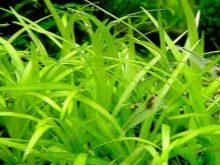
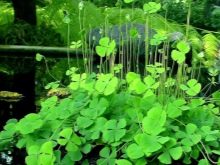
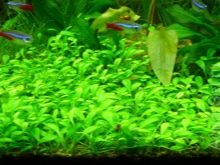
Features of the content
Keeping and growing conditions should be close to their natural habitat.All cover plants, which became "inhabitants" of domestic water bodies, moved here from New Zealand, Brazil, Thailand, where it is warm and sunny. Some of them are very difficult to care for, others can be easily dealt with by novice amateurs.
For a comfortable habitat of any ground cover plants, you must:
- maintain the optimal temperature (up to 28 degrees) and the level of illumination using metal halide lamps with a power of 0.5 W per liter of water;
- keep the aquarium clean: thoroughly siphon the "living carpet" and change the water;
- feed the soil with liquid fertilizers;
- saturate the water with CO2: a high oxygen concentration is necessary for some specimens.
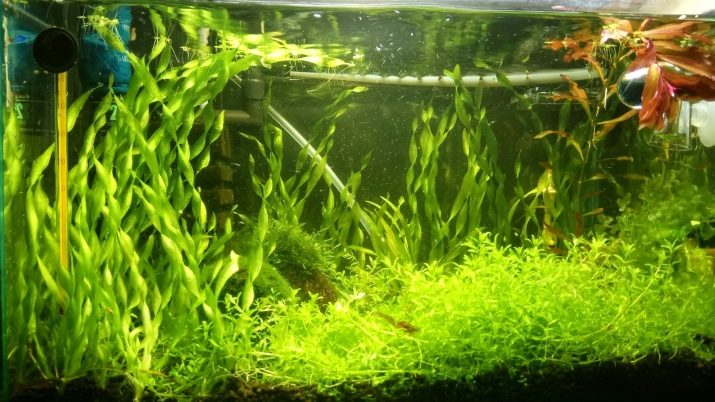
The most unpretentious
Liliopsis
The plant has 9 varieties. The most common ones are:
- liliopsis brazilian;
- liliopsis caroline.
Lilopsis brazilian
Liliopsis is a refuge for fish and arthropod inhabitants of the aquarium. The plant looks like lawn grass, if all the required conditions are met, it grows just as smoothly and neatly, and most importantly, it does not require a haircut.
It is combined with any other types of plants, specimens with smooth glossy leaf plates look especially impressive against its background. It is planted in small bushes, growing, requires regular thinning so as not to overgrow with algae-weeds.
In order for the green meadow to please you for many years, the plant is looked after:
- feed regularly;
- observe the temperature regime from 18 to 28 degrees;
- maintain the required average hardness and alkaline composition of water;
- for rapid growth, a 12-hour light regime is set.
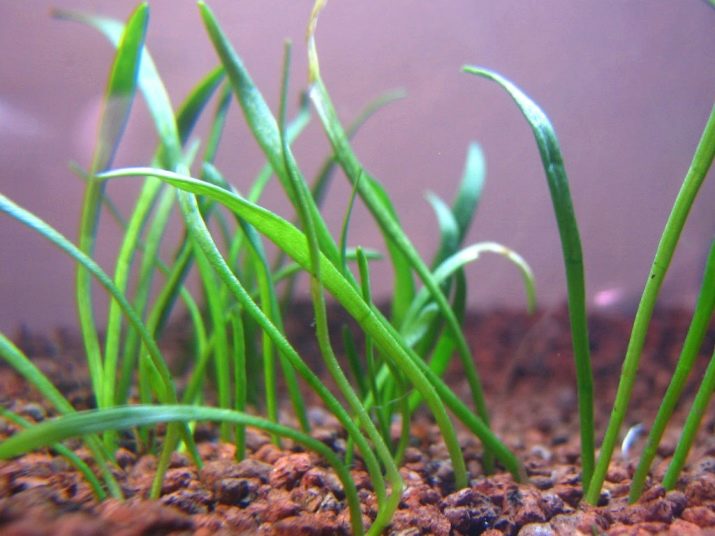
Liliopsis Caroline
In the water, it practically does not differ from the Brazilian one. It is also planted in the foreground and highlighted. The culture is unpretentious to water hardness, prefers slightly alkaline acidity.
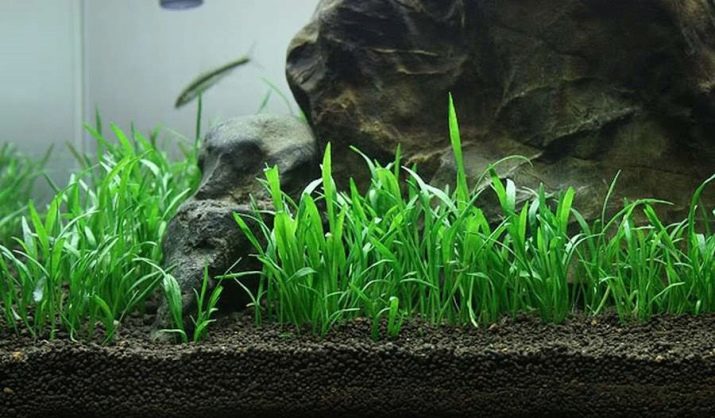
Marsilia
Marsilia four-leafed is a creeping plant no more than 10.5 cm high with more rounded leaves than its Brazilian counterpart. It looks great in aquascapes, growing in a thick carpet at the bottom. It's good to use it to create specific areas and lawns.
If you are planning to plant other plants, regulate the growth of Marselia, otherwise it will quickly take up all the free space.
In care, the culture is very unpretentious: it does not need additional lighting, it is neutral about the hardness and acidity of the water.
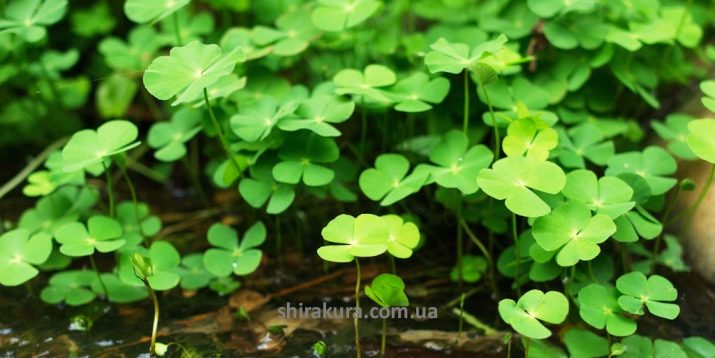
Javanese moss
In the aquarium, this plant looks just magical - the soft stem, covered with small thin light green leaves-needles, moving smoothly in the water, is simply mesmerizing.
Growing up, the moss creates fantastic bright green thickets. It can be easily attached to any surface and grows without soil on shells, snags, even masters filters and glass of the aquarium. With its help, you can embody any design idea by tying it to the desired support with a strong thread.
Javanese moss is completely picky about the conditions. The main thing for the species is clean water, without any debris, otherwise the plant, the pores of which quickly clog up, will die.
The presence of Java moss in an aquarium is not just an aesthetic pleasure for the owner, but also a large nest for its inhabitants: many fish prefer to spawn in its growth.

Riccia
This plant will allow even the novice aquarist to create a stunningly beautiful landscape. Thallus plants grow very quickly, creating picturesque islands floating in the upper layer of water. Air bubbles penetrating between the layers of Riccia make it lush and airy.
This moss is able to live on any surface, despite the absence of rhizomes, stems and leaves. In order for Riccia to master the required surface, it is attached with a fishing line. At the bottom, the plant forms picturesque hills and hills, growing on stones.
The main condition for keeping Riccia is bright lighting and regular water changes. The culture is picky about the rest of the conditions in the aquarium.
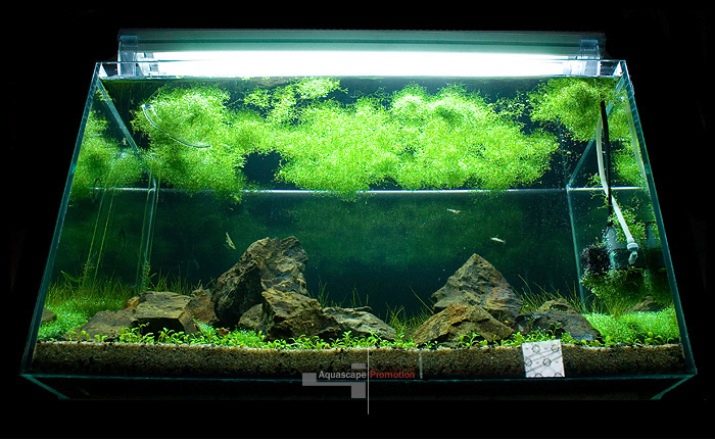
Sitnyag
The plant creates a natural and attractive look for your home pond. Its picturesque greenery not only decorates the aquarium, but also serves as an excellent home for fish.
There are several types of plants.
- Sitnyag is tiny. The maximum plant height is 10 cm. Outwardly, it resembles a soft, dense and juicy grass.
- Sitnyag viviparous. The plant is tall - 40 cm in height, suitable for creating a landscape in the background. It resembles small panicles, collected from very thin and soft shoots.
- Sitnyag needle. It has thin, light green, needle-like shoots, 15 cm high.
- Sitnyag marsh... It is characterized by straight and thin shoots of a reddish color, its flowers are similar to panicles.
The plant forms a lawn in 1-1.5 months. To prevent the shoots from stretching too much, they are cut before planting.
The culture is loyal to lighting, but cleanliness in the aquarium is the key to its successful growth in your reservoir.
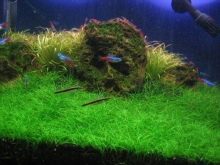
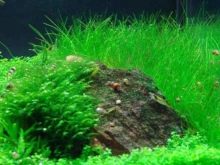

For more information on ground cover plants in an aquarium, see the next video.








